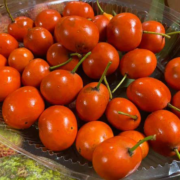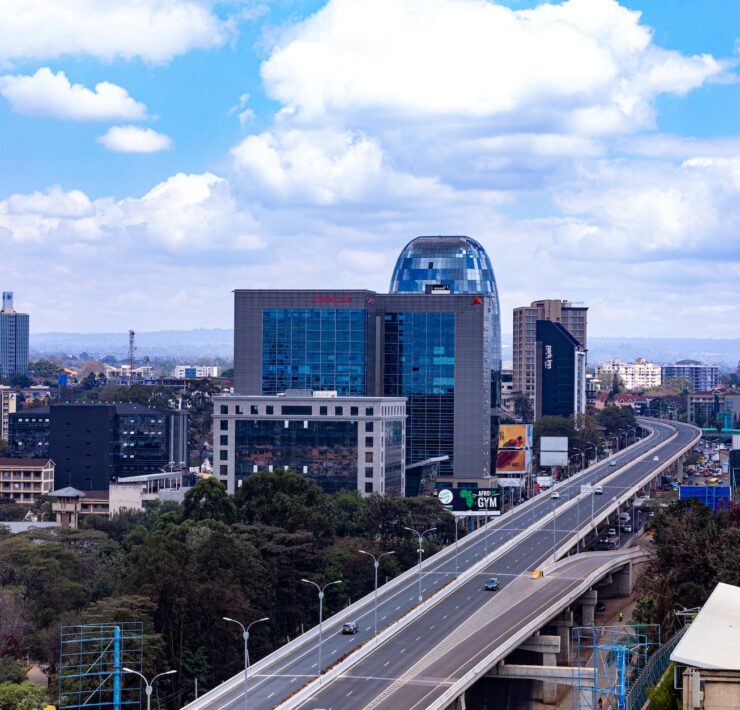The Real Cost of Synthetic Pesticides
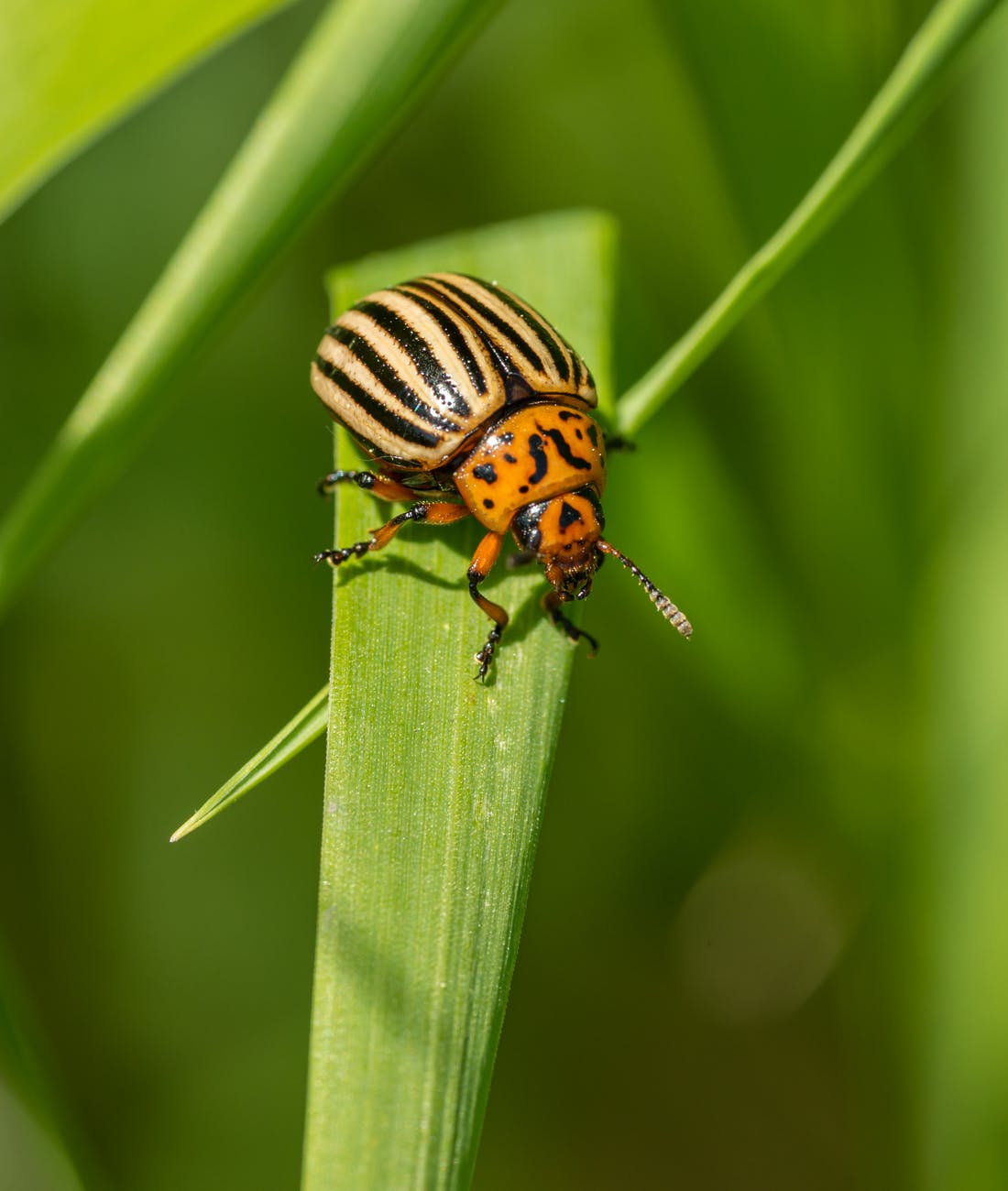
Chioma Phillips is the Editor of Msingi Afrika Magazine and…
And the Agro-Chemical Value Chain
I was reading a report published at the end of November 2021 by the Bureau for the Appraisal of Social Impacts for Citizen information (BASIC), CCFD-Terre Solidaire and Pollinis called “Pesticides: A Model That’s Costing Us Dearly. An initial cost-benefit analysis of the pesticide sector at the European level” and, of course I wanted to share everything with you. But it’s too long to fit here. You can read and download the 25-page English synthesized version here or the full report in French here or read the brief summary on their website here.
So, what I did instead was to pick out a few things that caught my attention that I thought were worth presenting in this article. The authors start their report off by pointing out that the growing use of pesticides is linked to the agricultural revolution of the 20th century, through which “a new paradigm spread across the world that public authorities claim is aimed at improving food security around the world.
This paradigm is based on four interdependent pillars, namely:
• Motorized and industrialized agricultural machinery;
• Synthetic fertilizers;
• Hybrid seeds; and, consequently
• The widespread use of synthetic pesticides.”
Now, when you consider the dependence of synthetic fertilizers on the petroleum industry as well as the ability of these fertilizers to destroy the natural storage and cycling capacity of carbon and nitrogen of the soil – as well as their impact on emissions… and then consider that almost all synthetic pesticides are derived from petroleum, and have an effect on soil health and viability, (herbicides too) – and these all affect plant, animal and human life through air, water and soil contamination, you begin to see a pattern emerge that can help provide you with clues as to what games are going on around the area of Big Agriculture.
According to an article by Grain, Greenpeace and Institute for Agriculture and Trade Policy, which we re-shared in the last issue of this magazine (here), based on research undertaken by scientists working with the three organizations, “the production and usage of synthetic nitrogen fertilizers account for 2.4% of global emissions, making it one of the top climate polluting industrial chemicals.” Not only that, but their research found that “emissions from synthetic N fertilisers are highly concentrated in certain geographic areas. The main emitters are China, India, North America and Europe. But, on a per capita basis, the highest emitters are the big agricultural export countries of North America (US and Canada), South America (Argentina, Brazil, Paraguay, Uruguay) Australia/New Zealand and Europe (Denmark, France, Ireland, Ukraine). Worldwide, emissions keep growing every year, including in Africa, where fertilizer use is now growing rapidly.”
If we go back to the report by BASIC, CCFD-Terre Solidaire and Pollinis, we see something that is very important for us to understand and keep in mind, i.e., where the money is. “In 1990, 16 firms accounted for about 80% of the pesticide market. But successive mergers and acquisitions have led to a market with four leading companies – Bayer, BASF, Syngenta/ChemChina and Corteva – which together occupy more than two thirds of the market.” The pesticide-herbicide-fertilizer-seed synergies that these companies have created mean that these companies are also “leaders in the agricultural seed sector, holding a nearly 60% share of the global market.” As a result, at 10-20%, their profit-to-turnover ratios are “50% above the European manufacturing industry average”. This is taking place while generic pesticides from China and India, which are up to four times cheaper than patented versions, enjoy increased popularity, making China the largest and India the fifth-largest exporters of these products. China’s top chemical company, ChemChina is “the world’s leading chemical company, particularly in agrochemicals.” Thanks to its merger with Chinese state-owned SinoChem and its takeover of Syngenta in 2017, one of the top three European pesticides firms.
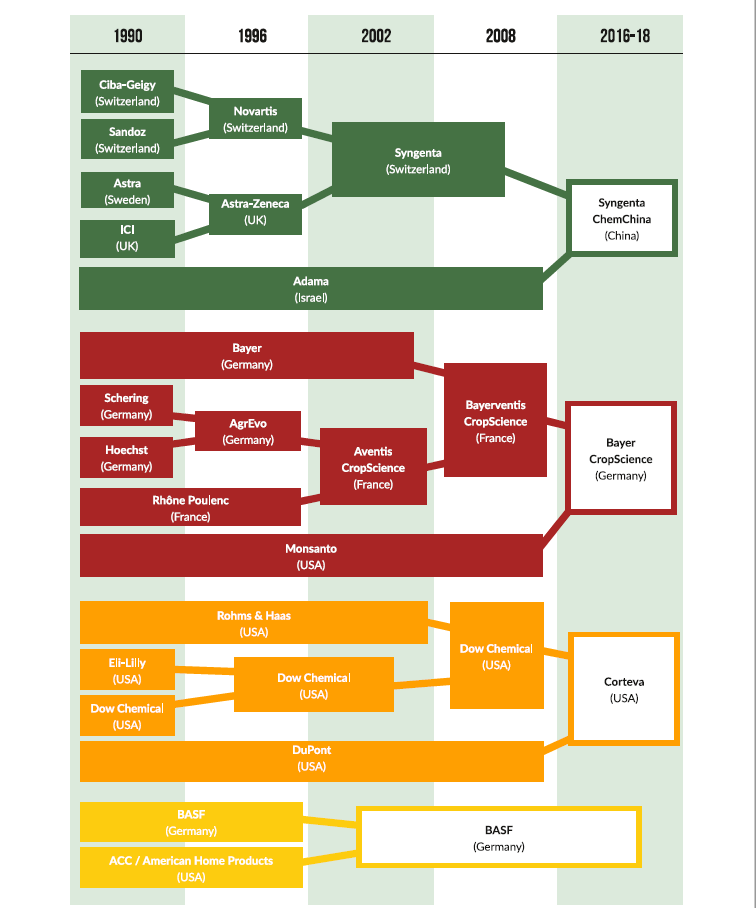
What should really cause your eyebrows to rise is the next piece of information. The report goes on to say that with the exception of Syngenta/ChemChina, the three largest pesticide and fertilizer companies “are partly owned by the same five private equity funds: Blackrock, Vanguard, State Street, Capital Group and Fidelity.” Who also own “between 10% and 30% or more of the capital of the global leaders in the agricultural and food sector, such as Deere & Co., CF Industries, ADM, Tyson, Kellog’s, Unilever, Nestle, Mondelez, Cocoa Cola [sic], Pepsi and other.” Some or many of these private equity funds are also owners of Big Pharma and Big Media (you can read more about that here), creating a ‘nice’ little loop of control in the entire circle of influence around food and medicine.
The report goes on to say that while average global yields have more than doubled using machinery, fertilizers, pesticides (I will add herbicides to this list) and hybrid/GMO varieties, “in the last several years stagnation or even decline in crop yields have been observed in areas which have specialized in growing certain crops. This concerns 24% to 39% of maize, rice, wheat and soybean growing areas worldwide. The suspected causes are the growing phenomenon of pesticide resistance, the degradation of soils and of biodiversity due to intensive agricultural production systems using pesticides as well as climate change (which is itself worsened by intensive agricultural production systems.)”
They also assert that the global food production model has been focused on a limited number of high-yield plant varieties which are high in calories and are available at low cost, for both animals and humans. They say that this has led to increased global consumption of high fat, high sugar processed foods that have triggered obesity and malnutrition. Furthermore, the model of food production adopted benefits the manufacturers of farm inputs and the food processors, major food brands and distributors, skipping the farmers along the way. Farmers are endlessly trapped between the rising cost of inputs and the volatile or declining prices in the commodity market.
Pesticides are said to now be found in the environment to the extent that even wild animal and plant life have been exposed. And, due to their propensity for bioaccumulation, these pesticides are eventually passed on to their consumers which include domesticated animals and human beings. They can affect various body systems: endocrine, metabolic, nervous, immune, embryogenic and reproductive, “ultimately causing the populations of the affected organisms to collapse.”
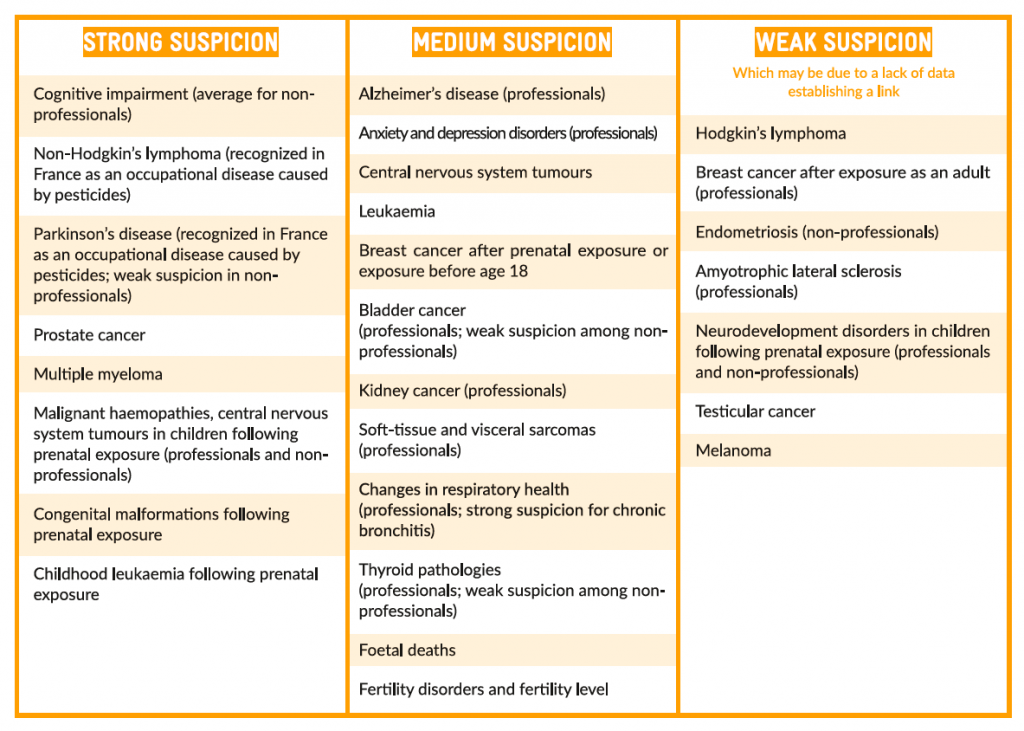
(French National Institute of Health and Medical Research). Source: BASIC
In line with the article I shared earlier by Grain, Greenpeace and Institute for Agriculture and Trade Policy, production costs for synthetic Nitrogen fertilizers are rising due to the increasing cost of natural gas which is used during the manufacturing process. Indeed, local farmers in Kenya have been feeling the pain of the rising costs of farming inputs, based on reviews of comments and posts in online platforms as well as government initiatives to introduce subsidies for farmers. These costs have affected them to the point where some have even talked about abandoning synthetic inputs altogether and beginning to use natural organic options for the growing of their crops and feeding of their animals. What they see as a desperate solution that they are implementing out of frustration; I see as an answer to prayer. They have found themselves in a position where they have been forced to go back to basics, back to simpler ways and processes that are decidedly less toxic and less harmful to their consumers than what they were using before. If only the entire continent of Afrika would reverse the trend that has been mentioned in the report by BASIC and go back to the use of simple, natural inputs to raise crops and farm animals, we would be in a much better place as a people.
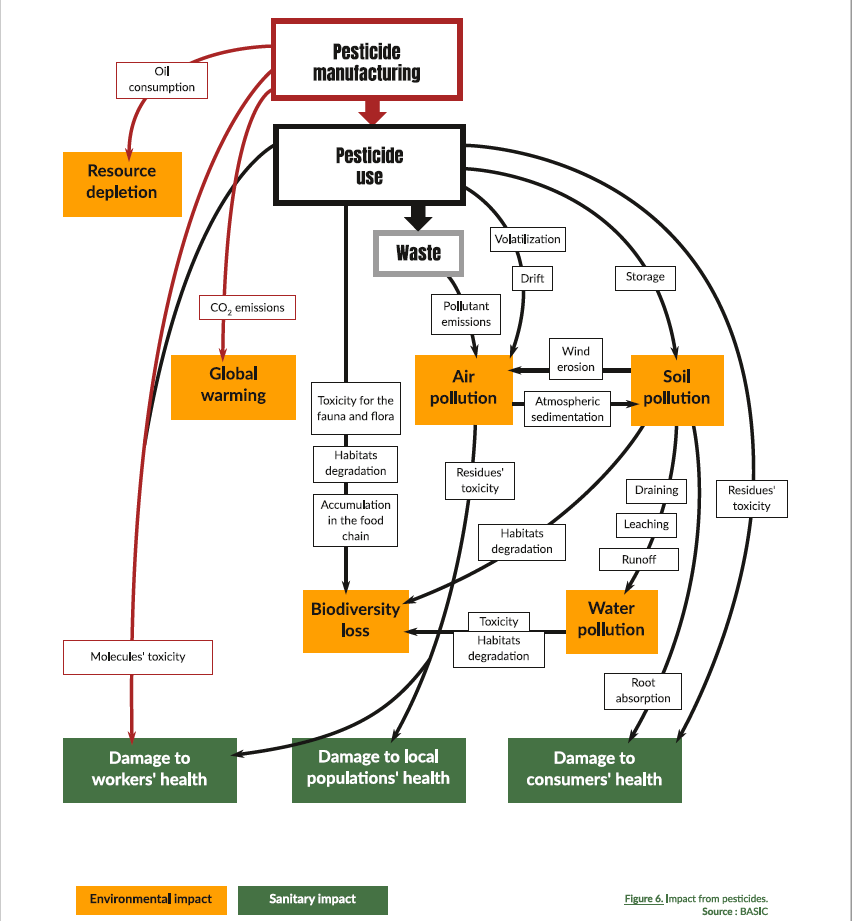
Considering the various levels of global interference and control in the farming sector, worldwide, the continued insistence of the use of toxic farm inputs – including hybrid/GMO seeds and seedlings – has created pressure on governments to enact legislature that is demeaning and dehumanizing to its citizens. Not to mention bringing defilement and contamination to their bodies and environment through their repeated use. The financial cost of inputs has put many farmers who are keen to continue their use in situations where they incur huge debts in order to farm and get reduced yields and prices, creating terrible socio-economic impacts on farming communities across Afrika. Why this is so when there are natural ways in which to conduct our farming practice that diminish all these risks and impacts is something each farmer and individual is going to have to quickly and urgently understand and resolve for themselves at a personal level.
I hope and pray that the choices they make are for the benefit of the future of the continent of Afrika and her children, because we are at a major crossroads where we can no longer remain neutral or passive concerning the impacts of these global frauds on our lives, livelihoods and wellbeing. It really is that serious.
What's Your Reaction?
Chioma Phillips is the Editor of Msingi Afrika Magazine and the host of Msingi Afrika Television. Her hope is to see the Truth shared, with all who will listen, for the transformation of the people and the continent of Afrika - and the world. She believes passionately in the critical role that Afrika and Afrikans have to play on earth right now and hopes to ignite the spark that will cause them to see and believe who they are, so that they can live out their Truest lives for the remainder of their days.








